Key takeaways:
- Design iterations are vital for refining ideas and adapting to user feedback, transforming initial concepts into effective designs.
- Embracing flexibility and open-mindedness during feedback sessions fosters collaboration and leads to improved user experiences.
- Utilizing tools like wireframing and prototyping software enhances the design process by facilitating real-time adjustments and user testing insights.
- Learning from failures and being willing to revise personal ideas are crucial for creating successful designs that resonate with users.
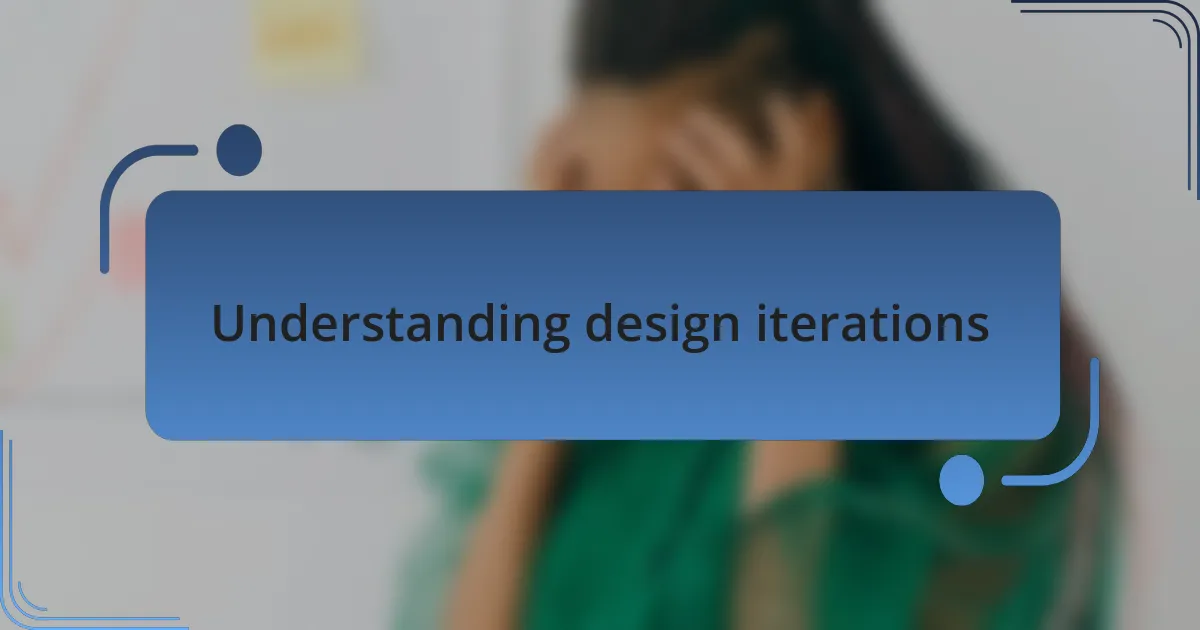
Understanding design iterations
Design iterations are an essential part of the web design process, allowing us to refine our ideas and address user feedback. I recall a project where we launched a beta version that revealed unexpected user behavior. It was a lightbulb moment, emphasizing how crucial it is to adapt designs based on real interactions rather than assumptions.
As I navigated through this iterative journey, I learned that each cycle of feedback and improvement brings its own set of challenges and victories. Have you ever felt the rush of unveiling a new design only to realize it needs tweaks? That’s the beauty of iterations; they transform initial concepts into polished masterpieces through trial, error, and insightful adjustments.
Understanding design iterations means embracing the idea that perfection is a moving target. I often remind myself that every revision brings us closer to meeting user needs, even if it feels daunting. The key is to view each feedback session as a treasure trove of insights—one that drives me to create more intuitive and engaging user experiences.
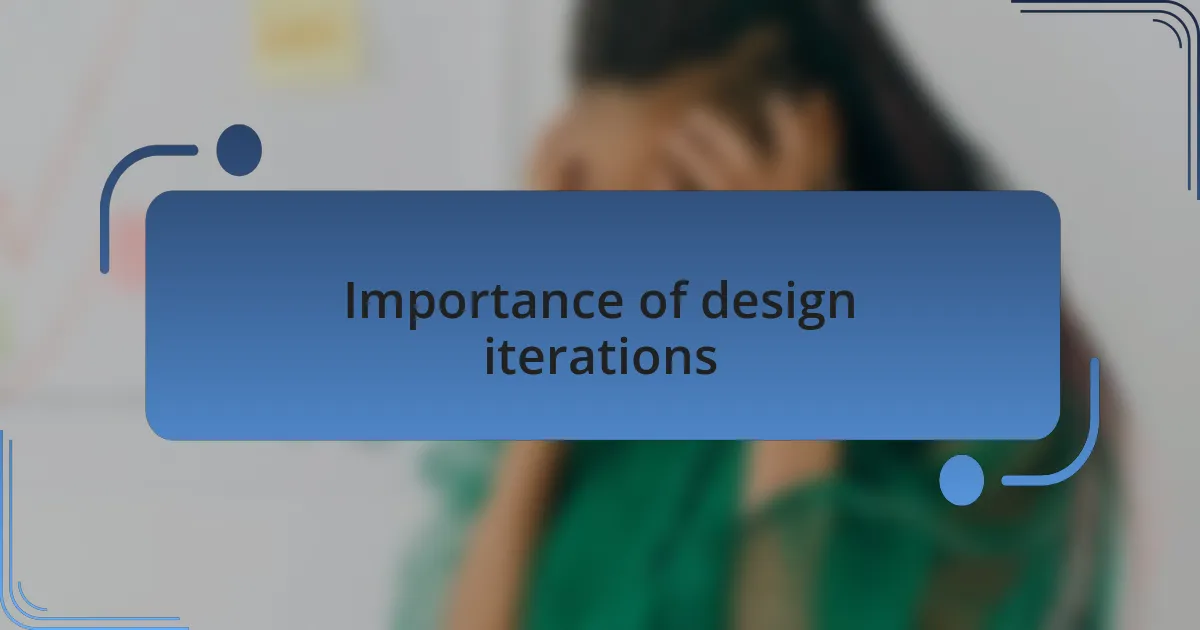
Importance of design iterations
The importance of design iterations lies in their ability to reveal user preferences and pain points. I remember working on a website redesign where the initial layout garnered mixed reactions during user testing. It was through these honest critiques that we were able to refine our approach, leading to a more intuitive navigation that ultimately increased user satisfaction. Isn’t it fascinating how listening to our audience can lead to better outcomes?
Each iteration teaches us the value of flexibility and adaptability in design. I once faced an unexpected challenge when users struggled with a feature that seemed straightforward to me. By revisiting the drawing board and incorporating user feedback, not only did we solve the issue, but we also strengthened our relationship with the audience. How often do we think we know what’s best, only to be surprised by our users’ insights?
In a fast-paced digital world, sticking to a rigid design can quickly become outdated. I’ve often found that iterations keep my designs fresh and relevant. It’s liberating to know that rather than aiming for a polished final product right away, I get to explore, test, and evolve my designs organically. Each iteration reflects a commitment to improvement that resonates with users, showing them that their experience matters.
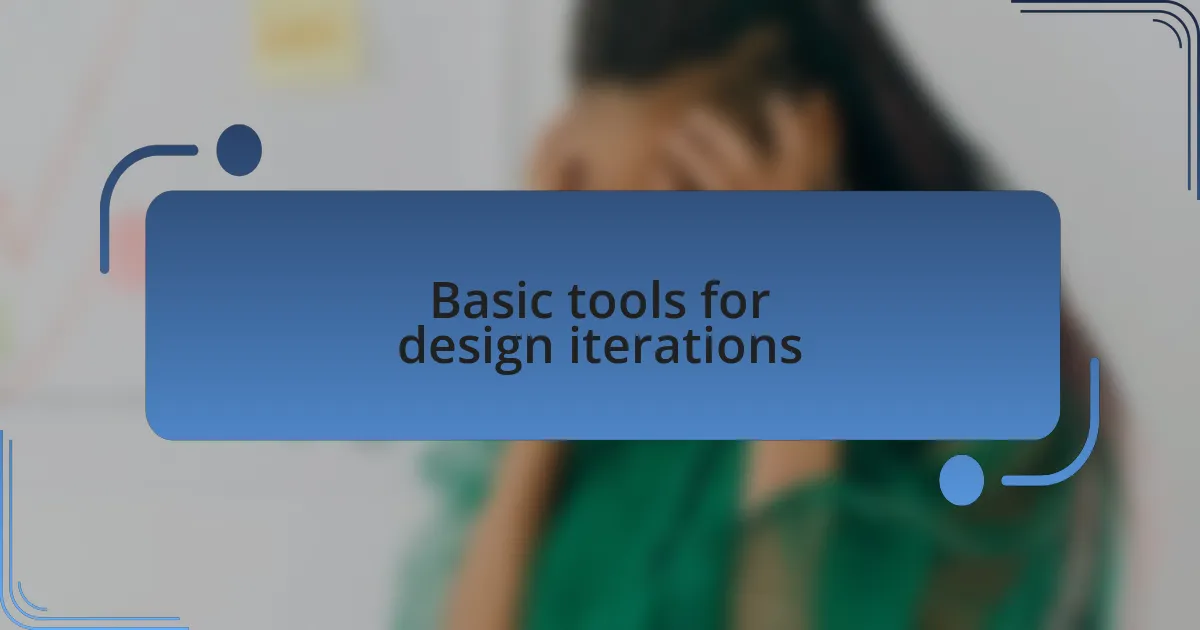
Basic tools for design iterations
To effectively manage design iterations, a few basic tools can make a significant difference. For instance, I frequently rely on wireframing software like Figma or Adobe XD. These tools enable me to sketch out ideas quickly and adjust layouts in real-time, facilitating collaboration with team members. Imagine being able to immediately implement feedback and see how it transforms your design on-screen.
Another resource I often utilize is prototyping tools such as InVision or Axure. They allow me to create interactive mockups that closely mimic the final product. I’ve found that sharing these prototypes with clients helps bridge the gap between concepts and reality. Have you ever had a moment where a simple click-through experience made a client’s vision clearer? It’s remarkable how these tools can highlight functionality that words alone might not convey.
Lastly, user testing platforms like UserTesting or Lookback provide invaluable insights that guide my iterations. I remember a project where user testing revealed unexpected issues with a color scheme I was confident about. This feedback led me to re-evaluate not only the colors but also the overall user experience. Isn’t it fascinating how something so seemingly trivial can dramatically influence design decisions? Each tool we choose plays a pivotal role in refining our designs through user-centered insights.
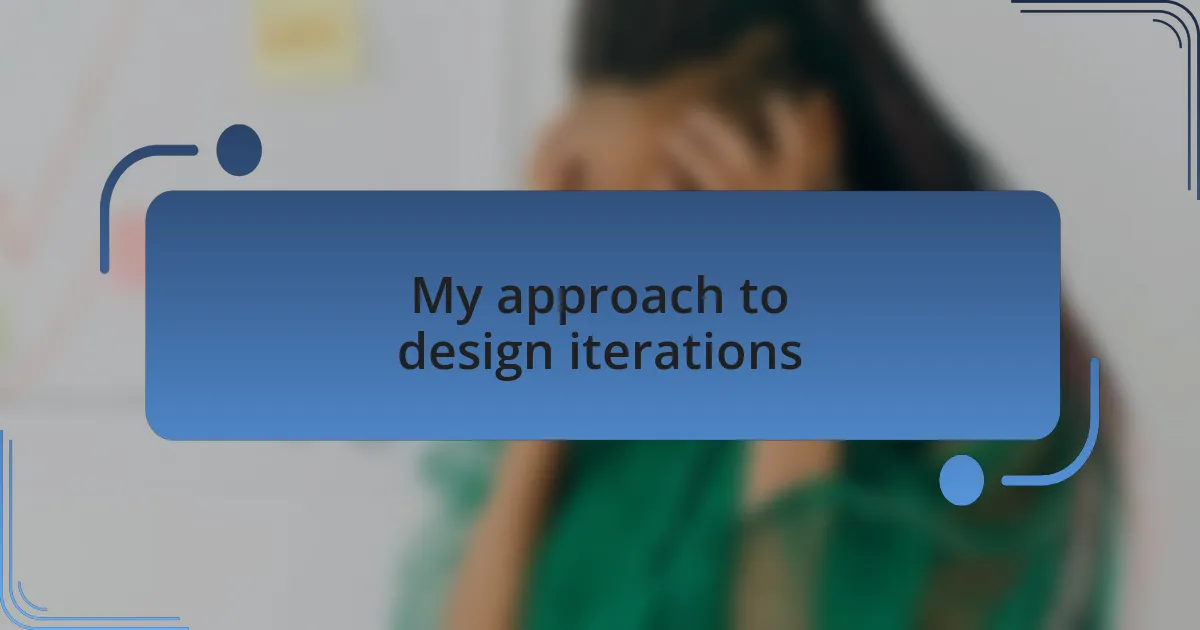
My approach to design iterations
When I approach design iterations, I always start with a mindset of curiosity and flexibility. Each version of a design feels like an exploration where I am both the guide and the student. I’ve found that the more open I am to feedback, the more my designs evolve into something genuinely effective. Have you ever noticed how a fresh perspective can turn an ordinary concept into something extraordinary?
A recent experience made this clear for me. While working on a website for a local non-profit, I thought I had nailed down the navigation. Yet, during the iteration phase, a colleague pointed out that it might be confusing for first-time visitors. Instead of getting defensive, I took a step back, reconsidered my layout, and ultimately redesigned it based on user journey insights. This change didn’t just enhance usability; it deepened my understanding of the audience’s needs. Isn’t it amazing how stepping away from our own ideas can lead to better outcomes?
In my experience, maintaining an iterative mindset transforms challenges into opportunities for growth. I often revisit each design with a critical eye, asking myself what isn’t working and why. This habit has proven invaluable; it reminds me that iteration is not simply about making adjustments but about enhancing the user experience continuously. When I reflect on my past projects, I realize how embracing iteration has allowed me to become a more empathetic designer. Have you ever thought about how each iteration could be a chance to connect more deeply with your users?
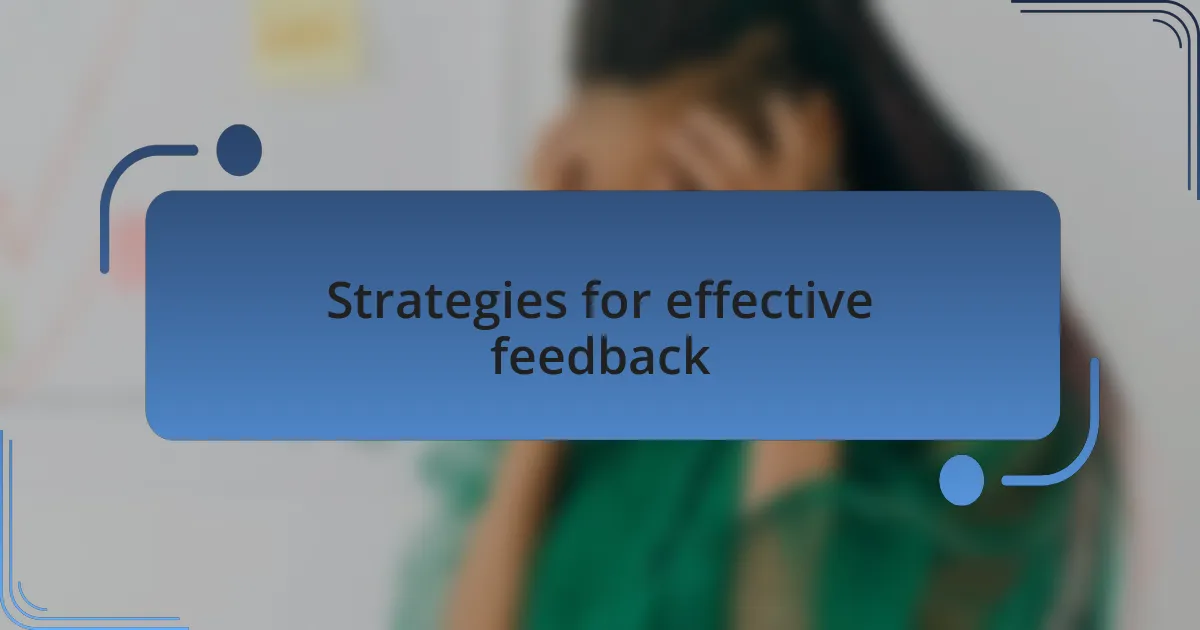
Strategies for effective feedback
When seeking effective feedback, I prioritize creating an open and inviting atmosphere for discussion. I recall a project where I hosted a casual lunch and learn, encouraging team members to share their thoughts about the design. This relaxed setting led to unexpected insights and allowed people to voice their opinions freely, ultimately refining the concept in ways I hadn’t anticipated. Have you ever found that the best ideas emerge when people feel comfortable and valued?
Listening is just as crucial as inviting feedback. I remember reviewing a site design with a focus group of potential users. Rather than just asking about what they liked, I encouraged them to express what frustrated them during the navigation experience. Their candid responses illuminated several design flaws that had escaped my notice. It’s fascinating how tuning in closely can reveal the unspoken needs of users; isn’t it enlightening to think about how often we overlook these valuable insights?
Finally, I make it a habit to follow up after gathering feedback. I often send a brief summary to participants, detailing how their input influenced the design revisions. In a recent project, I reached out to my client after implementing their suggestions, highlighting the changes we made based on their feedback. This not only strengthened our working relationship but also reinforced the idea that their opinion truly matters. How often do we take the time to acknowledge those who help shape our designs?

Lessons learned from design iterations
When reflecting on my design iterations, I’ve realized that embracing failure can be a powerful teacher. I recall a particularly challenging project where an initial concept flopped during user testing. Instead of viewing it as a setback, I took time to dissect what went wrong. This analysis led to a breakthrough in designing a more intuitive interface, which ultimately became the foundation of a much stronger final product. Have you ever noticed how a stumble can spark a creative shift?
One significant lesson I’ve learned is the importance of flexibility in the design process. In a recent project, I had invested a lot of time in a specific color scheme that I was passionate about. However, user feedback highlighted that it didn’t resonate with the target audience. Rather than stubbornly sticking to my vision, I adapted my design. This taught me that sometimes, letting go of your favorite ideas can lead to something even more beautiful. How often do we hold onto our preferences at the cost of delivering what users truly need?
Collaboration throughout the iteration process has consistently enriched my designs. In one memorable instance, I paired up with a graphic designer who had a completely different style than mine. As we exchanged ideas and perspectives, I found that our contrasting approaches complemented each other. The end result was a design that not only amazed us but also delighted our users. It’s fascinating how teamwork can transform a solitary vision into something greater; have you ever collaborated unexpectedly and found magic in those moments?